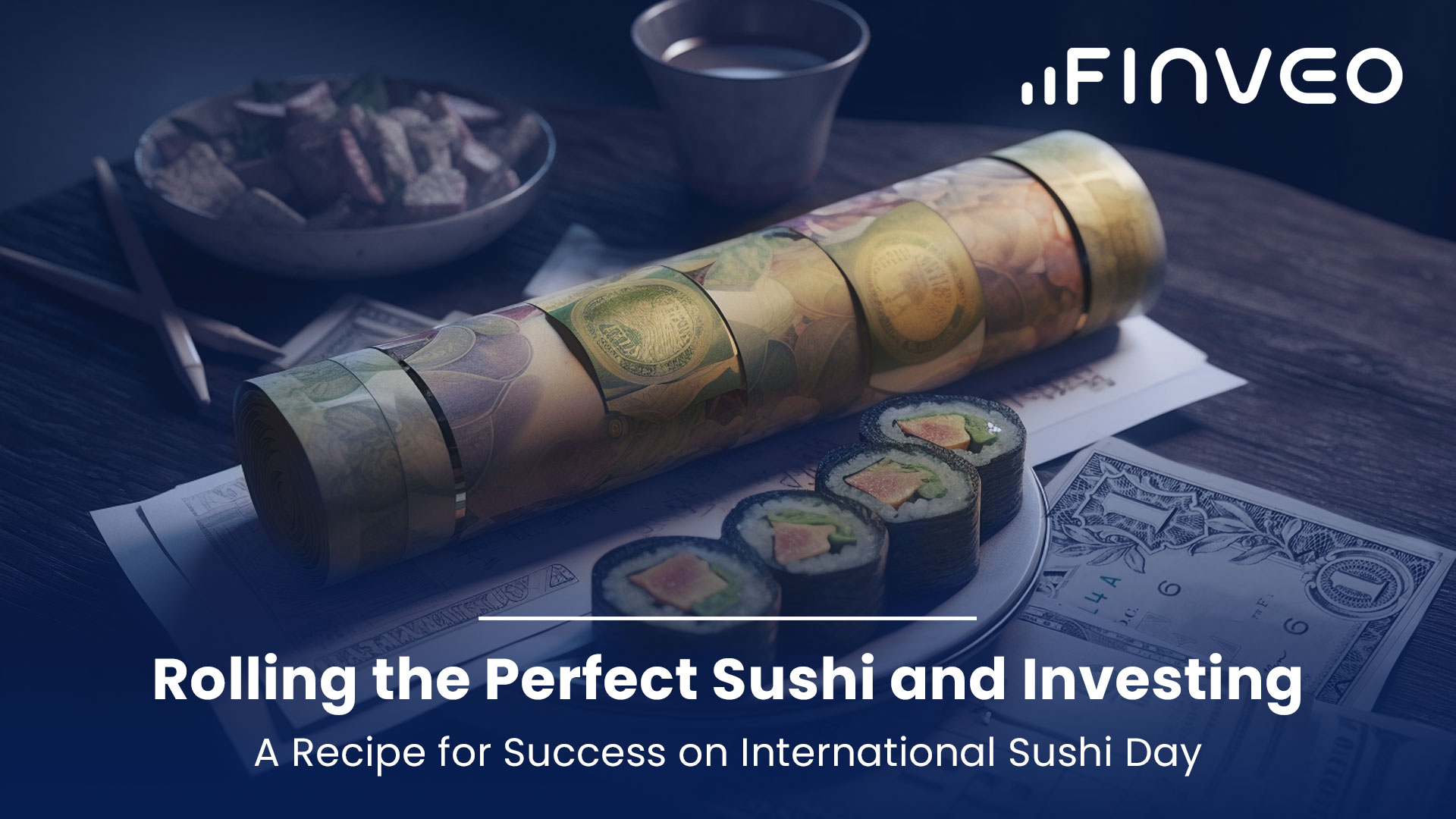As the world celebrates International Sushi Day on June 18th, we invite you to explore the art of making sushi from scratch while drawing intriguing parallels to the world of investing and trading. Just like crafting the perfect sushi roll requires skill, precision, and careful consideration of various ingredients, successful investing and trading in the financial markets demand a similar approach. Join us on this culinary journey as we delve deeper into the synergies between sushi making and the strategies that can help you achieve financial success.

Choosing the Right Ingredients: Fundamental Analysis and Market Research
In sushi making, selecting fresh and high-quality ingredients is essential. Similarly, conducting thorough market research and fundamental analysis is key to making informed decisions in investing and trading. Just as a sushi chef scrutinizes the quality of fish, rice, and vegetables, investors need to analyze economic indicators, company financials, and market trends to identify opportunities and mitigate risks. Understanding the underlying fundamentals of an asset or company can provide valuable insights that inform investment decisions.

Preparing the Rice: Technical Analysis and Risk Management
Rice is the foundation of a sushi roll, providing structure and flavor. Likewise, technical analysis forms the core of successful trading strategies. By studying charts, patterns, and indicators, traders can identify trends, support, and resistance levels, much like the precise measurement and preparation of sushi rice. Technical analysis helps traders make sense of market movements and anticipate potential price fluctuations. Additionally, just as too much or too little vinegar in sushi rice can spoil the taste, risk management is crucial in trading, allowing investors to control losses and protect their capital. Implementing appropriate risk management strategies, such as setting stop-loss orders and diversifying positions, helps traders navigate market volatility.
Adding the Fillings: Diversification and Portfolio Management
Sushi fillings add variety and taste to the roll, making each bite unique. Similarly, diversifying your investments across different asset classes and sectors can enhance your portfolio's resilience. A well-diversified portfolio reduces the impact of individual investment performance and increases the potential for stable returns. Just as sushi chefs skillfully combine fish, vegetables, and other fillings, investors need to carefully balance their holdings to mitigate risks and capture opportunities across multiple markets. Diversification helps spread risk and allows investors to benefit from different market conditions, ensuring a more balanced investment approach.
Rolling the Sushi: Entry and Exit Strategies
Rolling the sushi requires precision, finesse, and patience. In trading, entering and exiting positions at the right time is crucial for success. Traders use various strategies, such as trend following, breakout trading, or contrarian approaches, to determine optimal entry and exit points. The art of rolling sushi serves as a metaphor for the skillful execution of trading strategies, ensuring timely and profitable trades. Traders need to analyze market indicators, monitor price movements, and employ technical analysis tools to identify suitable entry and exit points for their trades. A well-executed trading plan enhances the potential for successful trades and overall profitability.

Presentation and Enjoyment: Long-Term Investing and Goal Setting
Presentation plays a significant role in the sushi experience, creating an enticing visual appeal. Similarly, long-term investing requires setting clear goals and crafting a well-thought-out investment plan. By identifying your financial goals, whether it's retirement, education, or wealth accumulation, you can align your investment strategy accordingly. Patience and disciplined execution over time lead to the enjoyment of long-term returns, just as savoring sushi brings satisfaction and fulfillment. Long-term investors focus on building a diversified portfolio, staying committed to their investment plan, and harnessing the power of compounding to achieve their financial objectives.
Trading and Investing in Ingredients Crucial for Sushi Making
When it comes to sushi, the ingredients used play a vital role in creating a flavorful and delightful culinary experience. In the world of trading and investing, these ingredients hold significant value as tradable assets. Seafood, such as tuna, salmon, and shrimp, is not only highly sought after in the culinary realm but also has a place in the commodities market. Investors can engage in trading seafood-related commodities, leveraging factors such as global supply and demand, fishing regulations, and environmental sustainability to make informed investment decisions.
Agricultural commodities also play a crucial role in sushi making. Ingredients like rice, seaweed, and soybeans form the backbone of many sushi recipes. Trading these agricultural commodities can provide unique investment opportunities. For instance, rice futures contracts allow investors to speculate on the price movements of this staple grain, which is not only used in sushi but also has extensive global consumption. Factors such as weather conditions, production levels, and export/import dynamics can significantly impact rice prices, presenting traders with a diverse range of trading strategies and opportunities. Seaweed, another essential ingredient in sushi, is a commodity with multiple applications beyond culinary purposes. It is utilized in various industries, including food production, cosmetics, and pharmaceuticals. Traders and investors can explore trading of seaweed-related commodities, considering factors such as harvest yields, quality standards, and demand from different sectors. Soybeans, often used in the form of soy sauce or tofu in sushi, are a significant agricultural commodity traded globally. Understanding the dynamics of the soybean market can provide insights for investors seeking exposure to this versatile ingredient. Factors such as weather conditions, global demand, and geopolitical events can influence soybean prices, creating opportunities for traders to capitalize on price fluctuations.
By recognizing the trading and investment potential of these crucial sushi ingredients, individuals with an interest in both culinary arts and finance can explore a new dimension of opportunities. Engaging in the commodities markets related to seafood, rice, seaweed, and soybeans allows investors to diversify their portfolios and gain exposure to industries closely linked to the culinary world. Just as sushi chefs carefully select and combine these ingredients to create a harmonious dish, investors can navigate the complexities of these markets to make informed trading decisions and potentially reap the rewards.
Final Touches
As we celebrate International Sushi Day, let's appreciate the art of sushi making and the remarkable similarities it shares with the world of investing and trading. By carefully choosing ingredients, analyzing markets, managing risks, diversifying portfolios, executing strategies with precision, and setting long-term goals, we can strive for success in both realms. So, whether you're a sushi enthusiast or a financial enthusiast, remember that a well-crafted approach is a recipe for success in both sushi making and investing. Happy International Sushi Day, and may your financial endeavors be as satisfying as perfectly rolled sushi!



















